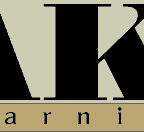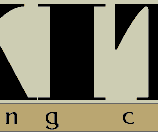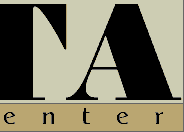FCI Standard: American Akita
(formerly Great Japanese Dog)
Origin: Japan
Development: USA
Utilization: Companion Dog
Classification FCI: Group 5
- Spitz and Primitive types
Section 4: Asian Spitz and related breeds
Without working trial
GENERAL APPEARANCE: Large-sized dog, sturdily built, well balanced, with much substance and heavy bone. The broad head, forming a blunt triangle, with deep muzzle, relatively small eyes and erect ears carried forward almost in line with back of neck, is characteristic of the breed.
IMPORTANT PROPORTIONS:
• The ratio of height at withers to length of body is 9 to 10 in males and 9 to 11 in bitches.
• The depth of the chest measures one-half of the height of the dog at withers.
•The distance from tip of nose to stop corresponds to the distance from stop to occiput as 2 does to 3.
BEHAVIOR/TEMPERAMENT: Friendly, alert, responsive, dignified, docile and courageous.
HEAD: Massive, but in balance with the body, free of wrinkles when at ease. Head forms a blunt triangle when viewed from above.
CRANIAL REGION:
Skull: Flat and broad between ears. A shallow furrow extends well up on forehead.
Stop: Well defined, but not too abrupt.
FACIAL REGION:
Nose: Broad and black. Flesh color permitted on white dogs only, but black always preferred.
Muzzle: Broad, deep and full.
Lips: Block and not pendulous; tongue pink. Flesh- colored lips permitted in white dogs only.
Jaws/teeth: Jaws not rounded, but blunt, strong and powerful. Teeth strong with regular and full dentition; scissor bite preferred, but level bite acceptable.
Eyes: Dark brown, relatively small, not pronounced, almost triangular in shape. Eye rims block and tight; flesh-colored eye rims permitted in white dogs only.
Ears: Strongly erect and small in relation to the rest of the head. If the ear is folded forward for measuring length, tip will touch upper eye rim. Ears are triangular, slightly rounded at tip, wide at base, not set too low. Viewed from the side, the ears ore angled forward over the eyes following the line of the neck.
NECK: Thick and muscular with minimal dewlap, comparatively short, widening gradually toward the shoulders. A pronounced crest blends harmoniously into the base of the skull.
BODY:
Longer than high. Skin not too thin, neither too tight nor too loose.
Back: Level
Loin: Firmly muscled
Chest: Wide and deep. Ribs well sprung with well developed brisket.
Underline and Belly: Moderate tuck-up
TAIL: Large and well furnished with hair, set high and carried over bock or against flank in a three-quarter, full, or double curl, always dipping to or below level of back. On a three-quarter curl, tip drops well down on flank. Root large and strong. The terminal bone of tail reaches hock when let or pulled down. Hair coarse, straight and dense, with no appearance of a plume.
LIMBS
FOREQUARTERS: Forelegs heavy-boned and straight as viewed from front.
Shoulders: Strong and powerful with moderate layback
Posterns: Slightly sloping forward in an angle of approximately 15 degrees to the vertical.
HINDQUARTERS: Strongly muscled, width and bone comparable to forequarters. Dewclaws on hind legs customarily removed.
Upper thigh: Strong, well developed, parallel when viewed from behind.
Stifles: Moderately bent
Hocks: Well let down, turning neither in nor out.
FEET : Straight, cot feet, well knuckled up with thick pads.
GAIT/MOVEMENT: Powerful, covering ground with moderate reach and drive. Movement parallel when viewed from front and behind, back remaining strong, firm, and level.
COAT
HAIR: Double-coat. Undercoat thick, soft, dense and shorter than outer coat. Outer coat straight, harsh/stiff and standing somewhat off body. Hair on head, lower legs and ears short. Length of hair at withers and rump approximately 5 cm, which is slightly longer than on rest of body, except toil, where coat is longest and most profuse.
COLOR: Any color like red, fawn, white, etc; or even pinto and brindle. Colors are brilliant and clear, and marking are well balanced, with or without mask or blaze. White dogs (solid in colour) have no mask. Pinto have a white ground color with large, evenly placed patches covering head and more than one-third body. Undercoat may have a different color from the outer coat.
SIZE:
Height at withers:
For males: 66-71 cm (26-28 inches)
For bitches: 61-66 cm (24-26 inches)
FAULTS: Any departure from the foregoing points should be considered a fault and the seriousness with which the fault should be regarded should be in exact proportion to its degree.
• Feminine dogs, masculine bitches
• Narrow or snipey head
• Any missing tooth (except 2 of the PM1 and/or M3)
• Spotted tongue
• Light eyes
• Short tail
• In or out at elbows
• Any indication of ruff or feathering
• Shyness or viciousness
SERIOUS FAULTS:
• Light in substance
• Light bone
ELIMINATING FAULTS:
• Butterfly nose or total lack of pigmentation on nose on dogs other than white.
• Drop, hanging, or folded ears
• Under or overshot bite
• Sickle or uncurled tail
• Dogs under 63.5 cm (25 inches), bitches under 58.5 cm (23 inches)
N. B.: Male animals should have two apparently normal testicles fully descended into the scrotum.




